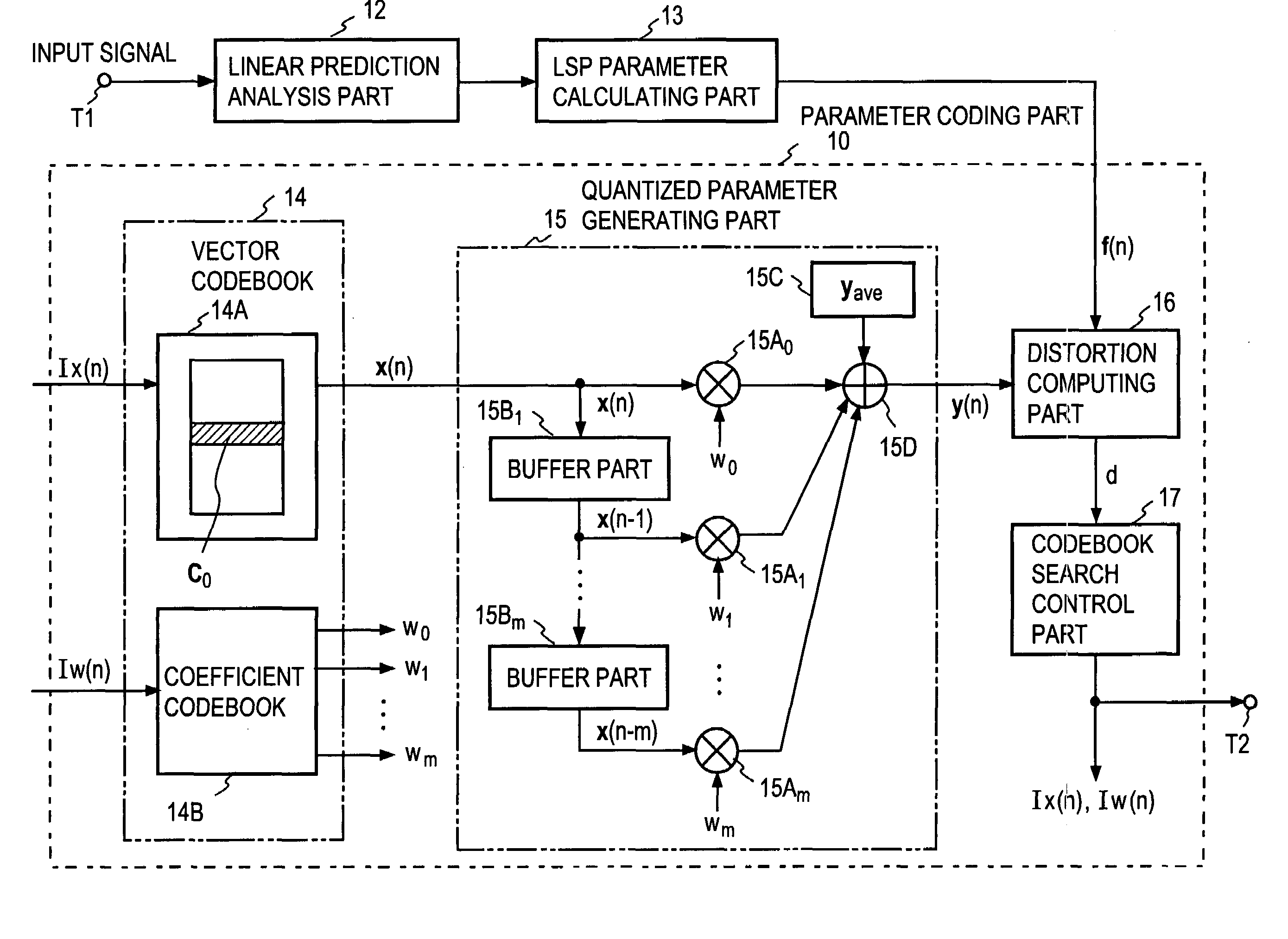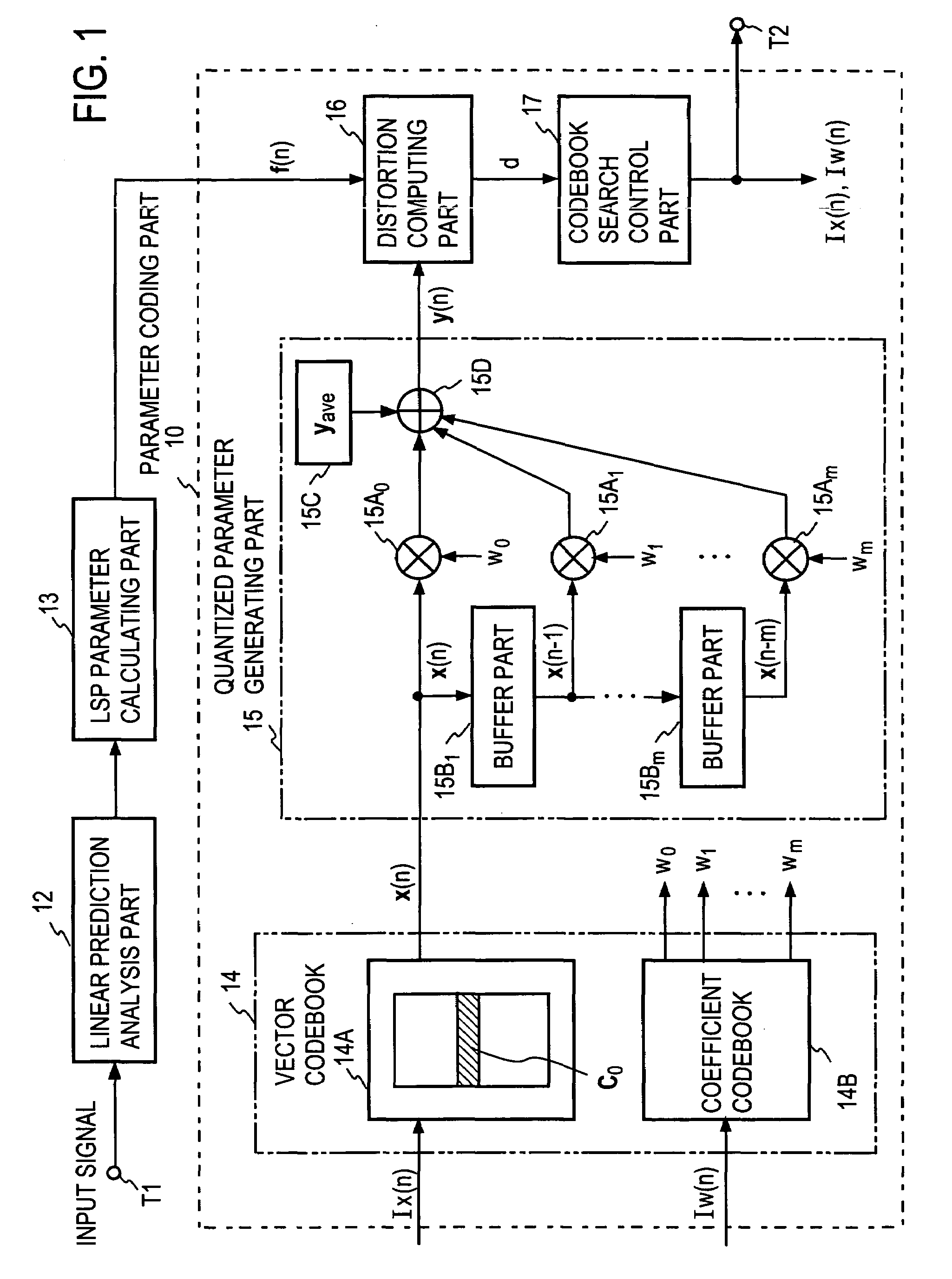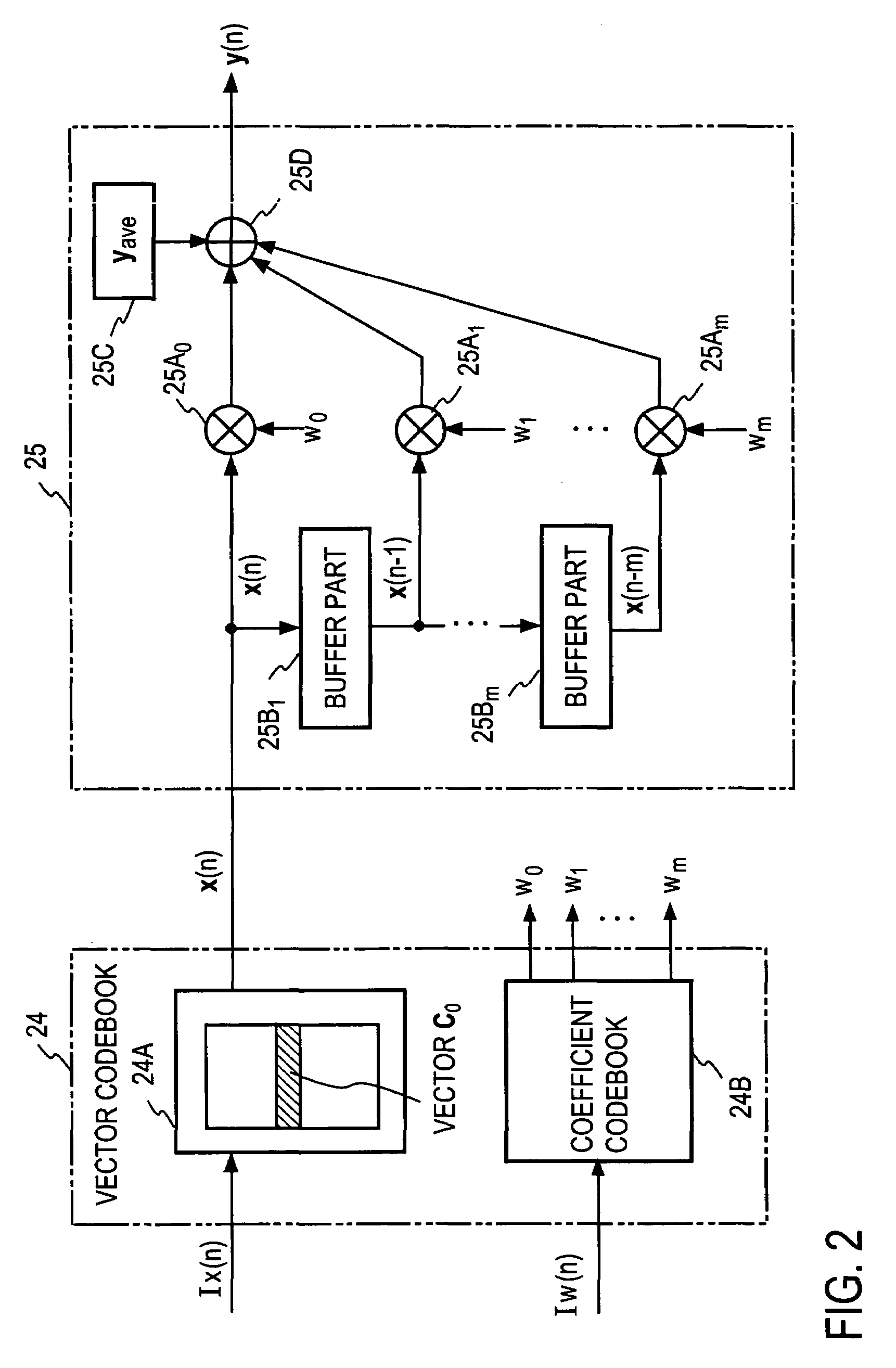Method, device and program for coding and decoding acoustic parameter, and method, device and program for coding and decoding sound
a technology of acoustic parameter and a program, applied in the direction of multi-frequency-changing modulation transference, transmission monitoring, instruments, etc., can solve the problems of inability to fully exhibit performance during non-voice intervals, design codebooks including sufficient quantized vectors corresponding to non-voice intervals, and inability to output. , to achieve the effect of small quantization distortion
- Summary
- Abstract
- Description
- Claims
- Application Information
AI Technical Summary
Benefits of technology
Problems solved by technology
Method used
Image
Examples
first embodiment
[0081]Next, embodiments of the invention will be explained with reference to the drawings.
[0082]FIG. 1 is a block diagram showing an example of a configuration of an embodiment of an acoustic parameter coding device to which a linear predictive parameter coding method according to the present invention. The coding device is formed of a linear prediction analysis part 12; an LSP parameter calculating part 13; and a codebook 14, a quantized parameter generating part 15, a distortion computing part 16, and a codebook search control part 17, which form a parameter coding part 10. In the figure, a series of digitalized speech signal samples, for example, are inputted from an input terminal T1. In the linear prediction analysis part 12, the speech signal sample of every one frame stored in an internal buffer is subjected to the linear prediction analysis, to calculate a pair of linear predictive coefficients. Now, supposing the order of the linear prediction analysis is p-dimension, the p...
second embodiment
[0098]FIG. 4 shows another example of the configuration of the vector codebook 14A of the LSP parameter encoder of FIG. 1 or the vector codebook 24A of the LSP parameter decoding device of FIG. 2, shown as a codebook 4A in case two-stage vector codebook is used. A first-stage codebook 41 stores N pieces of p-dimensional code vectors x11, . . . , x1N, and a second-stage codebook 42 stores N′ pieces of p-dimensional code vectors x21, . . . , x2N′.
[0099]Firstly, when the index Ix(n) specifying the code vector is inputted, the index Ix(n) is analyzed at a code analysis part 43, to thereby obtain an index Ix(n)1 specifying the code vector at the first stage and an index Ix(n)2 specifying the code vector at the second stage. Then, i-th and i′-th code vectors x1i and x2i′ respectively corresponding to the indexes Ix(n)1 and Ix(n)2 of the respective stages are read out from the first-stage codebook 41 and the second-stage codebook 42, and the code vectors are added together at an adding par...
third embodiment
[0105]FIG. 5 shows the case that in the vector codebook of the embodiment of FIG. 4, with respect to each code vector of the first-stage codebook 41, a predetermined scaling coefficient is multiplied by the code vector selected from the second-stage codebook 42, and the multiplied result is added to the code vector from the first-stage codebook 41 to be outputted. A scaling coefficient codebook 45 is provided to store scaling coefficients S1, . . . , SN, for example, in the range of about 0.5 to 2, determined by learning in advance in correspondence to the respective vectors x11, . . . , C0, . . . , x1N, and accessed by an index Ix(n)1 common with the first-stage codebook 41.
[0106]Firstly, when the index Ix(n) specifying the code index is inputted, the index Ix(n) is analyzed at the code analysis part 43, so that the index Ix(n)1 specifying the code vector of the first stage and the Ix(n)2 specifying the code vector of the second stage are obtained. The code vector x1i corresponding...
PUM
 Login to View More
Login to View More Abstract
Description
Claims
Application Information
 Login to View More
Login to View More - R&D
- Intellectual Property
- Life Sciences
- Materials
- Tech Scout
- Unparalleled Data Quality
- Higher Quality Content
- 60% Fewer Hallucinations
Browse by: Latest US Patents, China's latest patents, Technical Efficacy Thesaurus, Application Domain, Technology Topic, Popular Technical Reports.
© 2025 PatSnap. All rights reserved.Legal|Privacy policy|Modern Slavery Act Transparency Statement|Sitemap|About US| Contact US: help@patsnap.com



